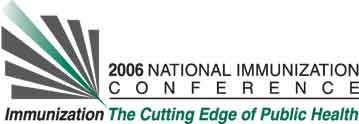Hajime Kamiya
1, Robert Vryheid
1, Wendy Wang
1, Carol Quinn
1, K. Michael Peddecord
2, Kathleen W. Gustafson
3, and
Mark H. Sawyer1. (1) San Diego Immunization Partnership, UC San Diego, County of San Diego HHSA Immunization Branch, PO Box 85222, Mail Stop P511B, 3851 Rosecrans Street, San Diego, CA, USA, (2) Graduate School of Public Health, San Diego State University, 5500 Campanile Drive MC - 4161, San Diego, CA, USA, (3) San Diego Immunization Branch, County of San Diego Health and Human Services Agency, PO Box 85222, Mail Stop P511B, 3851 Rosecrans Street, San Diego, CA, USA
Learning Objectives for this Presentation:
By the end of the presentation participants will be able to learn how physicians actually reacted facing the uncommon vaccine shortage situation
Background:
The nation's flu vaccine allotment was abruptly cut in half during the 2004-2005 influenza season. Eventually, San Diego County received 81.9% of the influenza vaccine that was originally allotted. The County of San Diego Immunization Branch investigated the shortage from the provider viewpoint.
Objectives:
To determine the impact of the influenza vaccine shortage on physicians caring for adults
Methods:
A questionnaire regarding the influenza vaccine shortage was distributed to a convenience sample of providers in San Diego County. We compared the responses from internists and family physicians to see if they had different attitudes and actions regarding the shortage situation. This data was analyzed by using two sample tests for binomial proportions.
Results:
A total of 358 questionnaires were distributed to doctors; 90 (21.5%) were returned. Physicians increased their efforts to deliver influenza vaccine during the shortage by holding special vaccine clinics (20%), responding to questions from patients (67%), and by seeking extra vaccine (56%). When faced with inadequate vaccine, providers referred patients to alternative sites [public health clinics (66%), community clinics (46%), pharmacies (41%)]. Due to redistribution strategies and other impacts of the shortage, 51.6% of providers had vaccine left over at the end of the season. Internists' and family physicians' responses differed on only two topics.
Conclusions:
Physicians were required to adapt their practices to deal with the influenza vaccine shortage. As was seen nationally, many physicians had vaccine left over at the end of the season.
See more of Posters
See more of The 40th National Immunization Conference (NIC)

